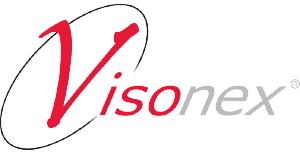Monitoring Chronic Kidney Disease
According to the National Institute of Diabetes and Digestive and Kidney Diseases (NIDDK), there is a great variation on whether patients progress to end-stage renal disease (ESRD). Not to mention, how quickly they progress when they do. It is essential for healthcare providers to have the right tools for monitoring patients with chronic kidney disease (CKD).
Monitoring Chronic Kidney Disease
Definition of CKD
Reduction in kidney function is defined as an eGFR<60mL/min/1.73m² > 3 months, and/or evidence of kidney damage This includes persistent albuminuria, which is defined as ¬> 30 mg of urine albumin per gram of urine creatinine for > 3 months. Doctors define kidney failure as an eGFR<15mL/min/1.73m².
Patients with diabetes run higher risks for the rapid progression of chronic kidney disease. This is true for patients with high levels of albuminuria and/or increasing albuminuria, as well as decreasing estimated glomerular filtration rate (eGFR). Diabetes patients with high blood pressure also run a greater risk for rapid progression of CKD. As a result, it is vital that healthcare providers are able to identify and aggressively treat these patients.
How to Monitor CKD
Healthcare providers are able to monitor kidney damage progress using the urine albumin to creatinine ratio (UACR). This ratio assists with evaluating the response to therapy and disease progression. By reducing urine albumin excretion to the “normal or near-normal” range, patients can improve renal and cardiovascular prognosis. Doctors consider a UACR greater than 30mg/g to be abnormal. However, doctors consider anything greater than 300mg/g as macroalbuminuria. Conversely, healthcare professionals consider a UACR of 30mg/g – 300mg/g to be microalbuminuria. Another way to track the progression of CKD is by monitoring the change in kidney function using eGFR.
To slow the progression of CKD, it is important to:
- Manage diabetes
- Control high blood pressure
- Reduce albuminuria
- Avoid acute kidney injury
- Most people with CKD have no symptoms until their eGFR is significantly reduced. For this reason, it is important to monitor at-risk patients carefully. It is also important to educate them in preparation for possible progression to ESRD.
Importance of Monitoring Chronic Kidney Disease (CKD)
The human body is very complex. Therefore, diagnosing and monitoring chronic kidney disease can be a challenging task. This can be true even for the most seasoned care provider. Algorithms in EHRs can assist healthcare providers to quickly identify certain disease risk factors, or even diagnose disease conditions, by using existing healthcare analytics (information), and evidence within the patient’s electronic health record, which can promptly lead to an appropriate treatment approach.
Visonex has an EHR platform and AI tools to help providers monitor, document, and manage the patient’s progression of chronic kidney disease. Visonex understands the importance of providing our clients with the right tools to reduce the burden for the clinician, assist with the application of the information, enhance clinical outcomes, and help streamline workflows.
Visonex®
Visonex is committed to the advancement of the integrated model of care in this value-based healthcare environment and can help your organization successfully manage chronic health conditions such as Chronic Kidney Disease (CKD). Visonex’s proprietary Analytics Data Warehouse (ADW), interoperability with multiple data sources, and chronic care electronic health records EHR platform with AI/decision support tools provide a meaningful, data-driven approach to improved patient health while driving efficiencies reducing costs. To learn more about how your current data could be used to lower risk for your patient population, reach out to [email protected]. Sign up here to receive industry updates. Maximize patient outcomes, improve regulatory compliance, streamline workflows, and incorporate multiple sources into a single landing point for chronic disease management. Now that is providing “Clarity” to a cloudy situation!
For more information on predictive analytics in healthcare, call us at 1-877-285-7944, visit our website at visonex.com or email us at [email protected]
Recent Articles
Predictive Analytics in Healthcare
Algorithms and Electronic Health Records
